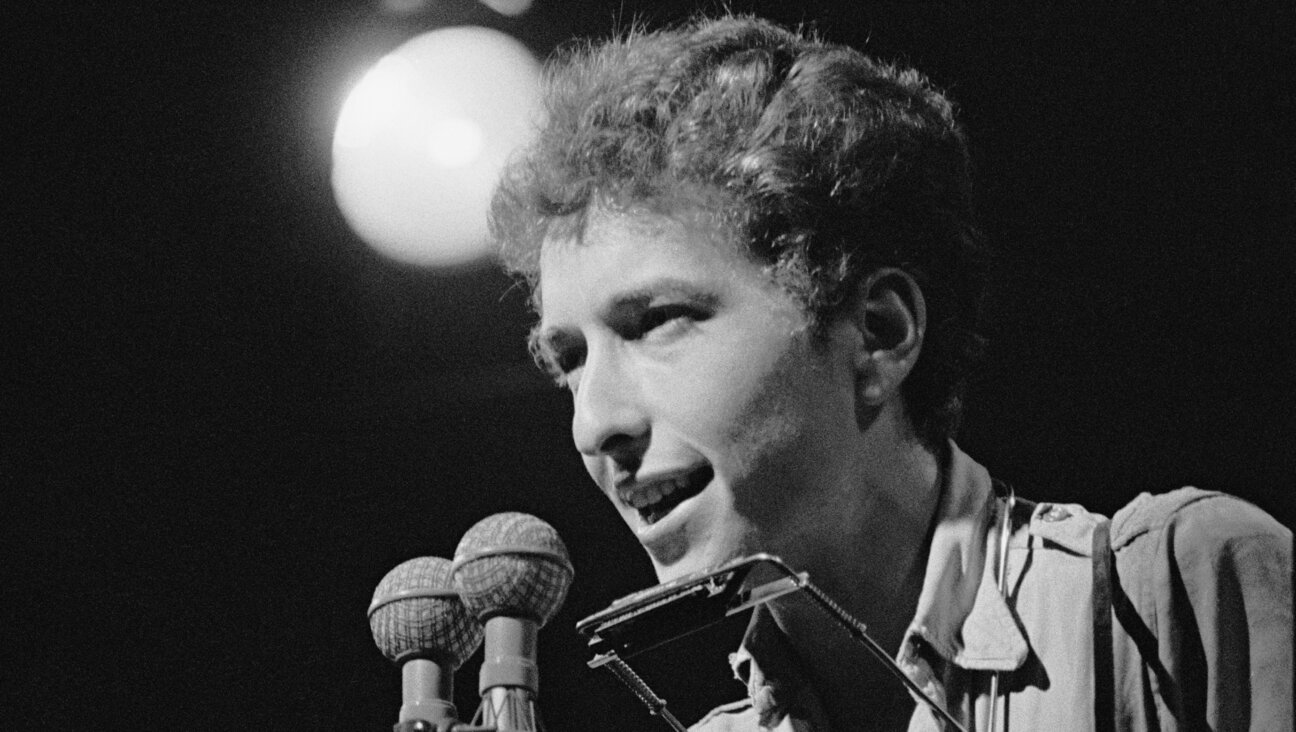Advice for the Anxiously Perplexed
Summer is theoretically a time to kick back and chill. But for kids, that’s not so easy. I remember my fears about camp, which were so much more profound than any anxieties about school. Would I have the right clothes? (No. I was lacking in kicky terrycloth Shabbat outfits.) Would the mean girls be mean to me? (Yes. But mostly they ignored me. Which was okay.) Would I have a boyfriend? (Mostly no.) Would I get a good part in the camp play? (Depends on your definition of good. I played a lot of whores. Really. I was Aldonza in “Man of La Mancha” — He-Abir mi La Mancha, to you Camp Ramahniks — and Fräulein Kost in “Cabaret.” My dad wrote a letter to the camp director asking if there was something he should know.)
For kids like me, school is a haven. It offers structure, clear expectations, a routine. But summer means being suddenly thrust into an unfamiliar world. Travel to far-flung relatives, new bunkmates at camp, summer school and enrichment programs, and for older kids, the pressure to beef up the college app with noble volunteering or impressive internships. Kids today don’t spend their summer days lazing on the porch or catching pollywogs in the crick. At least, not in my neck of the borough.
At 6, Josie has enrolled herself in three summer reading programs. She is, to put it kindly, driven. She worries about being unable to dive, and being made to learn by a bullying swim instructor. She worries about being put in too difficult a swim class, and then she worries about being put in too easy a swim class. She worries about being able to learn to write Hebrew script in the fall.
But new social settings hold no fear for her. As a confirmed dork, I marvel at the way she launches herself into new friendships, introduces herself to strangers on the playground, ends up with a new bud wherever we go.
Josie skipped into Gani nursery school and never looked back; Maxine had to be pried off my leg, sobbing. Maxine was born with a worried look, the expressive, quizzical eyebrows and knitted brow of a comic-strip character. Last weekend, at Legoland, while Josie hurled herself down waterslides and demanded rides on roller coasters, Maxine spent 20 minutes gently pushing an empty swing. She politely said, “No, thank you,” when invited to run through a sprinkler, rode a mild horsy ride with a look of uncertainty on her face, and made absolutely sure I was in her field of vision at all times. Yet she doesn’t put pressure on herself the way Josie did at her age. In some ways she’s more fearful, but in others, she’s more resilient.
Anyway, as you might imagine, books about anxiety are popular at our house. Our very favorite is “Wemberly Worried” (Greenwillow, 2000), by the brilliant Kevin Henkes. It’s gentle and simple enough for a 3-year-old. Wemberly, who is about to start nursery school, is a mouse with majorly anxious shpilkes. At the playground, she worries about the structural soundness of the equipment. On Halloween, she first worries that there will be too many butterflies in the neighborhood parade, then worries that she’s the only one. But on the first day of school, Wemberly’s wise teacher introduces her (and her comfort object, a stuffed bunny named Petal) to a fellow worrier, Jewel (and her comfort object, a stuffed kitty named Niblet). With a friend, Wemberly finds that life’s a little less scary. (“Wemberly worried. But no more than usual. And sometimes even less.”) Maxine loves Petal, whose furry ear has been denuded by Wemberly’s perpetually worrying fingers. (Maxine’s Petal-equivalent, Baby, has had all the fuzz rubbed off her green plush stocking cap.) I love that the book doesn’t make Wemberly stop worrying entirely. It just makes worry seem manageable. And that’s more than enough.
We also like Mélanie Watt’s “Scaredy Squirrel” series. Though Josie has mostly left picture books behind, she still studies these like the Talmud, chortling to herself. In the first volume, “Scaredy Squirrel” (Kids Can Press, 2006), the eponymous rodent is afraid to leave his nut tree, lest he encounter killer bees, germs, sharks, poison ivy, Martians and/or tarantulas. But when he spots a bee, panics and falls — dropping his carefully prepared emergency kit — he discovers his inner resources. Scaredy’s essential, angsty personality, like Wemberly’s, remains intact; he just learns to push his boundaries a bit. And the book is very funny, with a graphic-novel-like sensibility (lots of charts, lists and diagrams) and stylish, bold charcoal-pencil visuals. In “Scaredy Squirrel Makes a Friend” (Kids Can Press, 2007), Scaredy learns that one shouldn’t judge by appearances and that friends can come in unlikely guises. It sounds vomitously didactic, but isn’t. Scaredy Squirrel decides to befriend a goldfish, because it is silent and lacks teeth, but ends up having way more fun with an initially frightening and drooly dog. This book, too, encourages fearful kids to take small risks. I am less enamored of “Scaredy Squirrel at the Beach” (Kids Can Press, 2008), which feels more playing-to-the-grownups in-jokey to me. Josie doesn’t totally love it either, maybe because the fear of “being surrounded by the wrong crowd” is so alien to her.
Another current fave is “Something Might Happen” by Helen Lester, illustrated by Lynn Munsinger (Houghton Mifflin, 2003). Initially Maxine was frightened of the illustration of a quaking, bug-eyed lemur on the back cover. She protested, “I don’t like that boy! Read something else!” But once I strapped her into our Clockwork Orange eyelid-stretcher device and forced her to look at the book, she loved it. In it, a phobic little lemur is pushed to face his fears (sneakers, crunchy cereal, windows, marshmallows) and discovers, in the refrain that Maxine loves to chant: “Nothing happened.” I like that the lemur needs noodging, and I find his haunted lemur eyes hysterical. (And after Sacha Baron Cohen’s portrayal of the Lemur King in the fabulous animated film “Madagascar,” we are especially predisposed to lemur love.)
I also want to give a shout-out to “Ira Sleeps Over” by Bernard Waber (Houghton Mifflin, 1975), about the pressures of a first sleepover. And then there’s “Don’t Forget to Come Back” by Robie H. Harris, illustrated by Harry Bliss (Candlewick, 2004), which deals with separation anxiety. Like the Scaredy Squirrel books, it has a slightly graphic-novel-y look which will appeal even to kids who are aging out of chapter books. And Bliss, who does cartoons for the New Yorker, has a very amusing way of drawing deadpan, narrow-eyed, irked parents. Let’s say I can relate.
Write to Marjorie at [email protected].





























